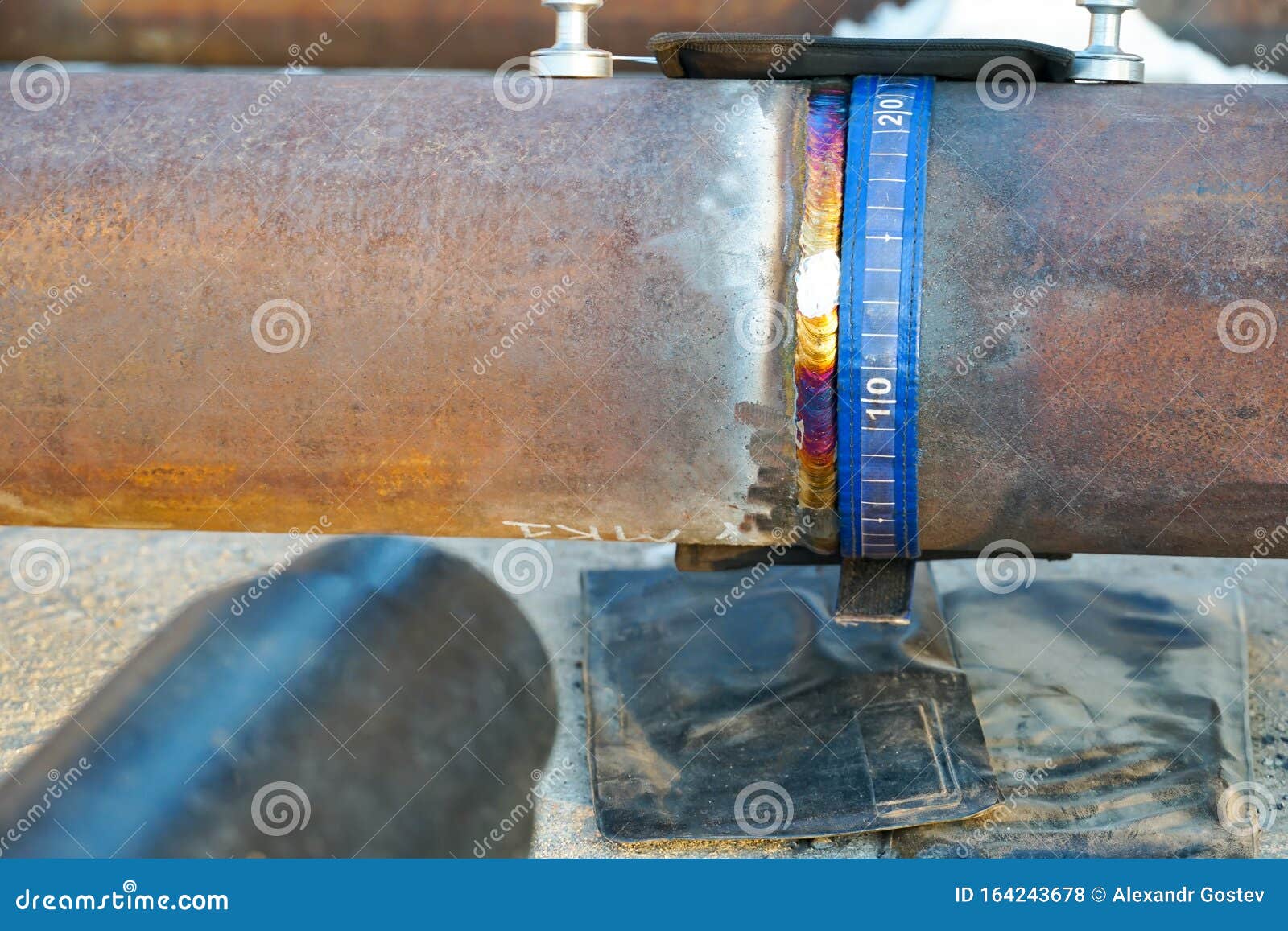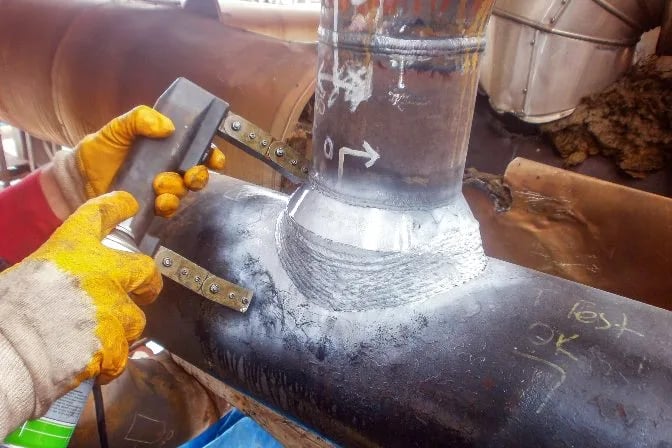Specialist Pipeline Welding Inspection Solutions: Ensuring Safety and Compliance
Ensuring Safety And Security and Accuracy in Pipe Welding Assessment
In the realm of pipeline welding evaluation, ensuring security and accuracy are vital purposes that require thorough focus. The honesty of pipes hinges on the high quality of welds, making the inspection procedure a vital element of upkeep and building and construction.
Importance of Pipeline Welding Assessment
Pipe welding evaluation is essential for ensuring the honesty and security of the infrastructure. Via precise inspection, possible flaws, such as cracks, insufficient penetration, or imbalances, can be found and corrected prior to they lead to disastrous failures.
Correct evaluation strategies, such as visual screening, radiographic testing, ultrasonic screening, and magnetic fragment testing, are used to evaluate the quality of welds. These techniques aid make sure that welds meet sector standards and governing requirements. By recognizing and addressing problems early in the welding process, the danger of leaks, ruptures, and ecological contamination is significantly minimized.
Furthermore, pipeline welding evaluation plays an important role in keeping conformity with security standards and policies. Regular examinations not just boost the architectural stability of pipelines but also contribute to the total safety and security of personnel and procedures operating in the location. Basically, purchasing thorough pipe welding assessment is a positive step to avoid expensive repairs, reduce threats, and maintain the reliability of important infrastructure.
Advanced Examination Technologies
Advanced inspection innovations play a critical duty in ensuring the stability and safety and security of pipe systems. One of the most noticeable advancements in pipeline welding evaluation is the use of automated ultrasonic screening (AUT)
Moreover, the execution of phased selection ultrasonic testing (PAUT) has revolutionized the assessment procedure by supplying detailed imaging of welds in real-time. PAUT provides much better flaw discovery capacities and permits quick data analysis, allowing inspectors to make informed decisions quickly - Pipeline Welding Inspection. Furthermore, digital radiography (DR) has become increasingly popular in pipe welding examination as a result of its capability to create top notch pictures that improve problem visibility while decreasing radiation direct exposure
Integrating these sophisticated evaluation technologies not only improves the quality of weld inspections yet additionally enhances total safety and security criteria in pipe building and maintenance.

Function of Trained Assessment Professionals
The integration of innovative examination innovations in pipeline welding evaluation emphasizes the important value of experienced assessment professionals in making sure the accuracy and reliability of analyses. Trained inspection specialists play an essential role in looking after the application of these technologies, analyzing the data gotten, and making notified choices based upon their competence.

These professionals are furnished with the necessary expertise and skills to carry out comprehensive examinations, determine possible defects or abnormalities in welds, and ensure compliance with sector standards and guidelines. Their ability to examine information, recognize patterns, and troubleshoot problems is essential in preserving the honesty and safety of the pipeline facilities.
Moreover, qualified assessment professionals act as an important web link in between technology and useful application. By leveraging their experience and training, they can give valuable insights, suggestions, and remedies to maximize the welding process and mitigate risks successfully.
Precaution in Welding Inspection
Effective application of security procedures in welding examination is extremely important to ensuring the security of workers and the stability of the facilities. Welding assessment tasks include different dangers such as direct exposure to fumes, electric shock, and fire dangers. To reduce these risks, adherence to security procedures is important. Workers these details associated with welding evaluation must wear appropriate individual safety devices (PPE) such as safety helmets, gloves, security original site glasses, and fire-resistant clothing to reduce the risk of injuries. Additionally, ensuring correct air flow in the welding location assists in decreasing exposure to harmful fumes and gases generated throughout the welding process.
Normal security training sessions need to be carried out to educate assessment professionals on the current security treatments and procedures. It is vital to have emergency situation reaction strategies in position to resolve any unanticipated incidents immediately. Inspectors ought to be cautious in examining the welding tools routinely to determine any kind of potential security threats. By prioritizing security procedures in welding inspection, organizations can produce a safe and secure workplace and maintain the top quality and reliability of pipeline facilities.
Ensuring Accuracy in Inspection Practices
With a focus on meticulous attention to information, attaining accuracy in examination techniques is crucial for ensuring the quality and integrity of pipeline welding. Precision in inspection practices involves sticking to rigorous criteria and guidelines to accurately assess the welds for great site any defects or blemishes. Making use of innovative examination modern technologies such as ultrasonic screening, radiographic screening, and aesthetic inspection approaches is critical in determining even the smallest flaws that could jeopardize the safety and security and performance of the pipeline.
Ensuring accuracy in assessment practices also calls for professional and trained examiners that have a deep understanding of welding processes, products, and industry guidelines. These assessors need to have the ability to analyze assessment results precisely and make informed choices concerning the approval or being rejected of welds based upon predefined criteria.
Normal calibration and maintenance of assessment equipment are vital to guaranteeing the integrity and accuracy of assessment outcomes. By supporting high criteria of precision in assessment techniques, stakeholders can have confidence in the architectural integrity and performance of pipe welds, ultimately contributing to the total safety and effectiveness of the pipe system.
Conclusion
Finally, the significance of pipe welding examination can not be overstated. Advanced assessment technologies and qualified assessment professionals play a critical role in guaranteeing safety and security and accuracy in welding practices. By complying with stringent precaution and keeping accuracy in inspection procedures, the stability of pipes can be upheld, securing versus possible risks and making sure the proceeded efficiency of the system.

Making use of innovative assessment innovations such as ultrasonic testing, radiographic testing, and visual evaluation methods is essential in identifying even the smallest imperfections that can endanger the security and functionality of the pipeline.
Advanced examination modern technologies and skilled inspection experts play an essential function in guaranteeing security and precision in welding practices.